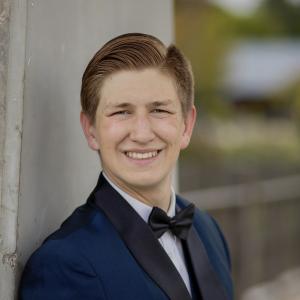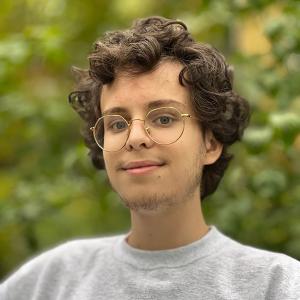Conservatory ensembles perform regularly throughout the semester, but I had worried that Winter Term would find Warner Concert Hall largely empty. Imagine my happiness upon learning that not only would I be provided with free entertainment during the otherwise indolent winter nights, but that it would come at the hands of Bela Bartok and George Crumb, two of my favorite composers. The Crumb piece I had never heard of; titled Unto The Hills, it was a setting of various Appalachian folk songs. This is not new material for American classical composers; the song "Tis a gift to be simple" has probably been scored hundreds of times. But comparisons between Copland's Appalachian Spring, or even John Williams' contribution to Obama's inauguration (a dissonant piece, not because of its harmonic content but because of its bland and predictable character on a day that was anything but bland and predictable), bear little similarity to Crumb's setting. Unto The Hills used a sonic palate common in most Crumb pieces: unpitched percussion, with piano, marimba, and vocal accompaniment. It was nothing if not interesting, but the degree to which Appalachian folk music has been reproduced in our modern musical canon made it hard to treat the songs with the degree of austerity and seriousness that I suspect Crumb expected.
The real star of the evening was Bartok's Second Violin Sonata, which opened the concert. (Here's a video of it performed by Christian Ferras and Guy Bourassa.) Performed by faculty members Gregory Fulkerson on violin and Robert Shannon on piano, it was a suitably rhythmic and highly energetic interpretation of a wonderful piece of music. Bartok's pieces tend to be very rhythmic, but too often the odd-metered dance rhythms that he incorporates into his music are flattened out in performance; instead of sounding like a folk dance in 5/8, pieces will sound like strings of quintuplets floating off aimlessly into the post-tonal ether.
Not to say there's anything wrong with that, but my understanding of the scholarship on Bartok leads me to believe that it was certainly not his intention for much of his music to be played in a staid and stately manner. Professor Fulkerson's performance was rhythmic but also quite aggressive; I feel like many musicians associate an increase in volume and attack with a decrease in tone quality, but this was certainly not the case here. The performance was so good that at the end of the piece the audience sat in stunned silence for a few moments before remembering that applause, rather than shocked gaping, is the customary response to a good performance.
I do wonder if they would have always performed that piece that way, or if the nature of the concert--a Winter Term recital, in front of a relatively small audience of maybe forty or fifty people--had a liberating effect. I remember seeing the wonderful pianist Krystian Zimerman play a noontime concert in tiny Portland, Maine, for an insultingly small audience. He played Liszt's famous Funérailles, and took huge liberties with his interpretation, which in turn imbued the piece with a greater degree of feeling and gravitas. The funeral march in the second movement was oppressive, and Liszt's modulation to Ab major from F- was all the more stunning as a result.
Afterward my piano teacher went backstage to speak with him. He said he attributed his interpretation to the relative freedom provided by a performance in a small city in front of a small audience. Of course, in a perfect world all classical performers would feel so free all the time, but I recognize that this is not the case and that most classical performers can't hope to reinterpret classical works and pay the rent at the same time. A shame.
* * *
In addition to practicing drums over Winter Term, I've also been working on getting more familiar with Ableton Live, a computer software used to create electronic music. I've been trying to write at least one song, drum beat, loop, or new sound every day. I've posted one of these new songs on my myspace if anyone's curious; it's techno, which isn't always my favorite kind of computer music - I've spent a lot more time working on using Ableton to generate noise, but I didn't think as many people would find that enjoyable to listen to. It's also interesting in that, while techno is dance music, I think that this particular song would be difficult to dance to. The piece has a few sections, which I tried and failed to blend together in a smooth way, and each one places the downbeat someplace different. The true downbeat is established by the drums at the beginning, but the keyboard part places it one 16th note ahead (the "e" of beat 1, in other words), and eventually the drums join in. It fluctuates from there.
The act of composing on paper is highly abstract; it takes a special type of mind to be able to hear something in their head and then notate it in a clear and precise manner. For those of us not so lucky to possess those compositional gifts, computer composition software like Ableton or Logic or Reason create a wonderful compromise. It's very egalitarian: the truly incredible but highly technical facilities required to compose on paper are no longer the only means to an end. All I need to do is play something once on my MIDI keyboard and my computer will save it forever, to be revisited and assembled into a larger piece whenever I choose.
Of course, my time at Oberlin has also given me enough aural skills training that I can fudge my way through pen and paper composition, but I'm excited about having this new resource at my disposal. Electronic and electro-acoustic music offer really limitless possibilities and I am eager to learn as much as I can. As part of my individual major I'll be giving a senior recital in the fall of 2010, which I hope to do in the 'Sco, the campus bar and music club, rather than the Cat in the Cream, which is the typical venue for jazz and improvised acts. Part of that stems from my staunch belief that live music and alcoholic beverages should be served in equal parts to an audience, but I also want to use the 'Sco's advanced sound system to put on a fully electro-acoustic jazz and improvised music concert. I have no idea what it will look like, but I can't wait to give it a go.


